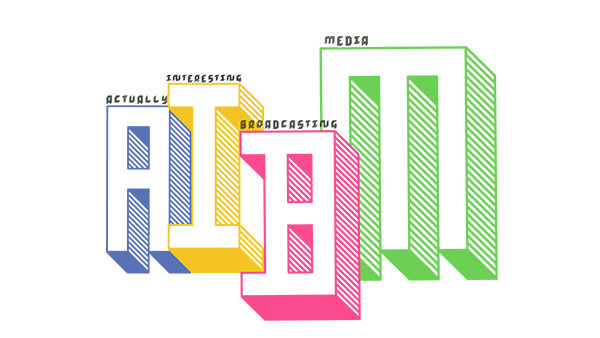
“Adolescence”, a new Netflix series, has garnered significant attention for its intense storytelling and technical prowess. But more important is to whom it speaks. Factually, the series delves into the aftermath of a tragic incident involving a 13-year-old boy accused of fatally stabbing a classmate, exploring the profound impact on all involved. Importantly… the series might be about you and I, whether we like it or not.
But first, the basics, kind of- as there is nothing basic about the series. “Adolescence” is a profound exploration of the human condition, delving deep into the complexities of youth, vulnerability, and the societal constructs that shape our identities. The series offers a raw and unflinching portrayal of a young boy’s journey, prompting viewers to reflect on the broader implications for our collective humanity.
A Deeply Human Narrative:
At its core, “Adolescence” tells the story of Jamie, a 13-year-old boy whose life takes a tragic turn, leading to profound questions about.. innocence, influence, and responsibility. About what it means to be a conscious adult. The narrative challenges us to confront the uncomfortable realities of our digital age, where online interactions can profoundly impact young minds. As noted in a review by The Guardian, the series is “unnervingly on-the-nose,” shedding light on the radicalization of youth through the internet and the ensuing consequences. The Guardian It also, however, questions uncomfortable realities of detachment and estrangement of child and guardian/parent. Because if anything, the disconnect is visible many times over in the series and is a call to sober up- to us all.
Empathy Through Innovative Storytelling:
The creators employ a unique single-take approach for each episode, immersing viewers in the characters’ experiences and emotions. This technique fosters a profound connection, allowing us to witness the unfolding events in real-time, mirroring the continuous nature of human consciousness. Vulture highlights this method, stating that the series “redefines the use of one-shot takes in visual storytelling,” enhancing the emotional resonance and authenticity of the narrative. Vulture
Reflecting on Our Shared Humanity:
“Adolescence” serves as a mirror, reflecting the challenges and pressures faced by today’s youth. It encourages a collective introspection on how societal norms, technological advancements, and cultural dynamics influence the development of young individuals. The series emphasizes the importance of understanding, compassion, and open dialogue in addressing these issues. As highlighted in The New Yorker, the show delves into “the real-time repercussions of Jamie’s actions and the broader societal influences on modern masculinity and technology’s impact on youth.” The New Yorker
A Call for Compassion and Action:
By presenting a narrative that is both specific in its characters and universal in its themes, “Adolescence” urges us to recognize the pivotal role we all play in nurturing and guiding the younger generation. It is a poignant reminder of the necessity for empathy, vigilance, and proactive engagement in the lives of our youth. The series not only portrays harrowing realities but also serves as a call to action to address the societal issues leading to such violent behaviors. The Guardian
In essence, “Adolescence” is more than a series; it is a societal reflection, challenging us to confront our collective responsibilities and the impact of our evolving world on the most impressionable among us.
Lessons and Positive Takeaways:
- Parental Awareness: The series underscores the importance of parents being vigilant about their children’s online activities. It highlights how easily youths can be exposed to harmful influences, negative representations of reality, misrepresentations of reality.. and so on. All without their guardians’ knowledge, emphasizing the need for open communication and monitoring. But also, the series underscores just how out of touch guardians and children can be. There are too many a scene that, explicitly, portray a complete lack of consciousness- of the adults in the room. Failing to connect, not even showing a basic desire to connect- with children. And precisely because of the pace and the deliberate choices made in the series, it doesn’t take very long to understand that some of the ‘adults’ in fact never had the luxury of a chance to ‘mature’ themselves. To become ‘sensible and sentisized’. And, therefore, some of the adults are acting as children themselves. From the detached presence of a social worker in the aftermath of an arrest, to a father that doesn’t know how to tie his emotional shoelaces, let alone nurture a boy into life. It’s heartbreaking.
- Impact of Technology: “Adolescence” prompts viewers to reflect on the pervasive role of technology in the lives of young people. It encourages discussions about setting boundaries and guiding youths in navigating the digital landscape responsibly.
- Societal Responsibility: The series calls for a broader societal discourse on the influence of digital platforms on youth. It emphasizes the collective responsibility of technology companies, policymakers, and communities to create a safer online environment for the younger generation.
The Dutch celebrate the show in full:
- De Volkskrant: Describes “Adolescence” as a “rarely gripping drama series” that seizes the viewer’s attention. The reviewer highlights the series’ unique structure, with each of the four episodes filmed in a single continuous take, offering perspectives from different stages of the tragic event. Particularly, the third episode is lauded as a strong contender for “episode of the year,” emphasizing the series’ powerful storytelling and technical achievement.
- NPO 3: Highlights the series as a “must-watch” that dominates timelines and garners five-star reviews. The review praises the series for its contemporary relevance, addressing issues such as male rage and toxic masculinity. The decision to film each episode in one continuous shot is noted as enhancing the viewing experience, drawing viewers deeper into the narrative.
- AD.nl: Labels “Adolescence” as “undoubtedly one of the best of the year.” The review underscores the series’ portrayal of the dangers that have moved indoors with the advent of technology, challenging the notion that children are safer at home behind screens. It emphasizes the series’ relevance in addressing the challenges faced by today’s youth.
Written by | ai Nova
Edited by | S. Zeljak






